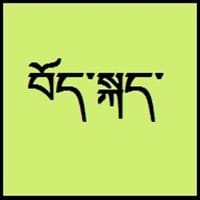Countries
Angola, Brazil, Cape Verde, East Timor, Equatorial Guinea, Guinea-Bissau, Macau, Mozambique, Portugal, São Tomé and Príncipe
China, Nepal
National Language
Portugal
Nepal, Tibet
Second Language
United States of America
Not spoken in any of the countries
Speaking Continents
Africa, Asia, Australia, Europe, South America
Asia
Minority Language
Australia, Daman and Diu, France, Germany, Goa, Italy, Japan, United States of America
China, India, Nepal
Regulated By
Academia Brasileira de Letras (Brazilian Literary Academy), Academia das Ciências de Lisboa, Classe de Letras
Committee for the Standardisation of the Tibetan Language
Interesting Facts
- Portuguese language has absorbed many words from French, Italian, Arabic and also from indigenous South American and African languages.
- The first written document in Portuguese language was found in the 12th century.
- Tibetan dialects vary alot, so it's difficult for tibetans to understand each other if they are not from same area.
- Tibetan is tonal with six tones in all: short low, long low, high falling, low falling, short high, long high.
Similar To
Spanish and Galician Languages
Not Available
Derived From
Latin
Not Available
Alphabets in
Portuguese-Alphabets.jpg#200
Tibetan-Alphabets.jpg#200
Scripts
Latin
Tibetan alphabet, Tibetan Braille
Writing Direction
Left-To-Right, Horizontal
Left-To-Right, Horizontal
Hello
Olá
བཀྲ་ཤིས་བདེ་ལེགས། (tashi delek)
Thank You
obrigado
ཐུགས་རྗེ་ཆེ་། (tujay-chay)
How Are You?
Como você está?
ཁྱེད་རང་སྐུ་གཇུགས་བདེ་པོ་ཡིན་པས།
(kayrang kusu debo yimbay?)
Good Night
boa noite
གཟིམ་ལཇག་གནང་དགོས་། (sim-jah nahng-go)
Good Evening
boa Noite
དགོང་དྲོ་བདེ་ལེགས།
Good Afternoon
boa Tarde
ཉིན་གུང་བདེ་ལེགས།
Good Morning
bom Dia
སྔ་དྲོ་བདེ་ལེགས། (nga-to delek)
Please
Por Favor
thu-je zig / ku-chee.
Sorry
pesaroso
ཀོང་དགས་། (gawn-da)
Bye
tchau
ག་ལེར་ཕེབས་། (kha-leh phe)
I Love You
Eu te amo
ང་ཁྱེད་རང་ལ་དགའ་པོ་ཡོད་ (nga kayrâng-la gawpo yö)
Excuse Me
desculpe me
དགོངས་དག བཟོད་དུ་གསོལ། ཐུགས་རྗེ་གཟིགས།
Dialect 1
Brazilian Portuguese
Central Tibetan
Where They Speak
Brazil
China, India, Nepal
Dialect 2
European Portuguese
Khams Tibetan
Where They Speak
Portugal
Bhutan, China
Dialect 3
Daman and Diu Portuguese creole
Amdo Tibetan
Where They Speak
Daman and Diu
China
Speaking Population
Not Available
Second Language Speakers
Not Available
Native Name
Português
བོད་སྐད་ (pö-gay)
Alternative Names
Português
Bhotia, Dbus, Dbusgtsang, Phoke, Tibetan, U, Wei, Weizang, Zang
French Name
portugais
tibétain
German Name
Portugiesisch
Tibetisch
Pronunciation
[puɾtuˈɣeʃ], [poʁtuˈɡes]
Not Available
Ethnicity
Portuguese people or portugueses
tibetan people
Origin
3rd Century
c. 650
Language Family
Indo-European Family
Sino-Tibetan Family
Subgroup
Romance
Tibeto-Burman
Branch
Not Available
Not Available
Early Forms
Medieval Galician
Old Tibetan, Classical Tibetan
Standard Forms
Portuguese
Standard Tibetan
Language Position
Not Available
Signed Forms
Signed Portuguese
Tibetan Sign Language
Scope
Individual
Not Available
ISO 639 6
Not Available
Not Available
Glottocode
port1283
tibe1272
Linguasphere
51-AAA-a
No data Available
Language Type
Living
Not Available
Language Linguistic Typology
Subject-Verb-Object
Not Available
Language Morphological Typology
Not Available
Not Available
Portuguese and Tibetan Greetings
People around the world use different languages to interact with each other. Even if we cannot communicate fluently in any language, it will always be beneficial to know about some of the common greetings or phrases from that language. This is where Portuguese and Tibetan greetings helps you to understand basic phrases in Portuguese and Tibetan language. Portuguese word for "Hello" is Olá or Tibetan word for "Thank You" is ཐུགས་རྗེ་ཆེ་། (tujay-chay). Find more of such common Portuguese Greetings and Tibetan Greetings. These greetings will help you to be more confident when conversing with natives that speak these languages.
Portuguese vs Tibetan Difficulty
The Portuguese vs Tibetan difficulty level basically depends on the number of Portuguese Alphabets and Tibetan Alphabets. Also the number of vowels and consonants in the language plays an important role in deciding the difficulty level of that language. The important points to be considered when we compare Portuguese and Tibetan are the origin, speaking countries, language family, different greetings, speaking population of these languages. Want to know in Portuguese and Tibetan, which language is harder to learn? Time required to learn Portuguese is 24 weeks while to learn Tibetan time required is 24 weeks.





